Review of popular varieties of petunias of the "Opera" series and their features
Petunia is a favorite flower of many gardeners. She is unpretentious in care, looks luxurious and blooms all summer. Florists distinguish Opera petunia and its subspecies. White, yellow, blue and pink inflorescences are located along the entire length of the shoots, curling and shimmering beautifully. Next, we will find out everything about the Opera petunia: features of care and maintenance, reviews of experienced gardeners.
The content of the article
Petunia Opera - what is this series of varieties
Opera - ruler ampel varieties of petunia... It is distinguished by long and curly shoots, on which inflorescences of different colors are formed.
Distinctive features
Petunia of the Opera series is a hybrid, which is the result of artificial pollination of flowers. It has an attractive appearance and strong immunity.
Inflorescences are located tightly along the entire length of the shoot, therefore, petunia is actively used in landscape design. Even one pot with such a plant will favorably decorate the gazebo, porch and other areas of the cottage.
Attention! Petunia Opera is planted not only in gardens, but also in apartments - on loggias or balconies. The length of the lashes reaches 120 cm, the flower is grown in pots or pots.
Popular types
Among the varieties of Opera, there are white, pink, purple flowers. Each variety is beautiful and unpretentious to care for, so petunia can be seen in many Russian gardens.
Supreme Raspberry Ice
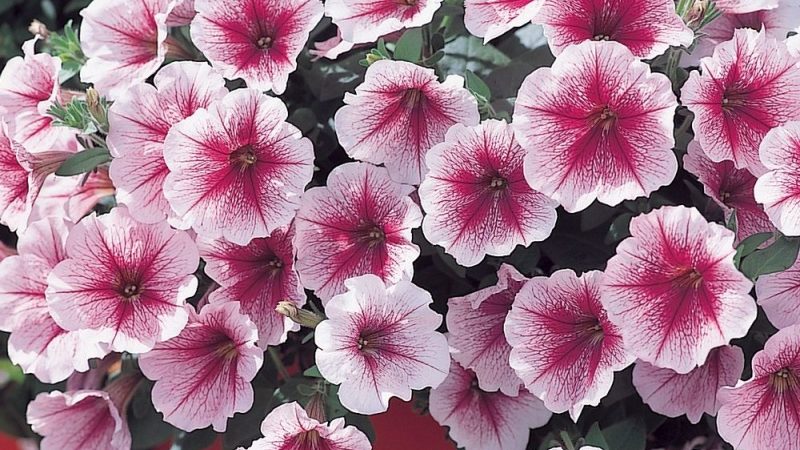
Petunia Supreme Raspberry Ice (translated as "crimson ice") belongs to the series ampel varieties Japanese selection. The color is white-pink with purple veins, the diameter of the flowers is 5-6 cm, the length of the shoot is up to 1 m. The flowers are located tightly to each other, the foliage is rich green.
Supreme Raspberry Ice is characterized by abundant flowering, undemanding to the length of daylight hours. Petunia looks best in hanging pots or drawers. An excellent option for beginner gardeners who are just starting to get acquainted with the varieties of the Opera series.
Blue
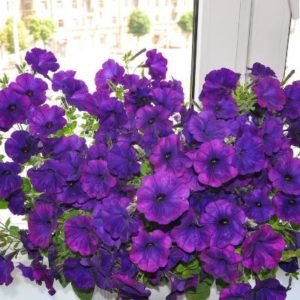
The full name of the petunia is Opera Supreme Blue. The shape of the bush is neat, the length of the lash is about 100 cm.
The flowers are large, with a diameter of 5 to 7 cm, blue-violet with tints. Leaves are light green, small.
Summer residents note that the flowers do not lose their rich shade even under the influence of bright sunlight.
Opera Supreme Blue rarely gets sick, has long flowering and resistance to external factors.
Purple
Opera Supreme Purple is grown in hanging baskets. The diameter of an adult bush is about 1 m, in some cases it reaches 1.2 m.
Petunia strongly branches, outwardly resembles an openwork and light cloud. Flower diameter - 6 cm, pink-purple color, rich and deep.
Opera Supreme Purple is one of the most popular varieties: it does not require much attention to itself, it is suitable for a plot of any size.
White
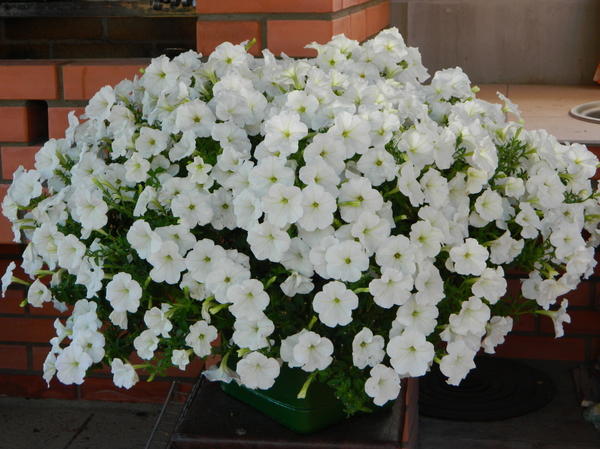
White petunia with a light yellow center is great for hanging structures. Simple in planting and caring, seeds can be purchased at any gardening store. The bushes are neat, the length of the lash is about 80 cm.
The flowers are large, with a diameter of 6 to 8 cm. Leaves are rich green, medium size. Opera Supreme White blooms for 5 months - from June to October. The variety is suitable for growing in any region of the country, including the middle lane.
Pink morn
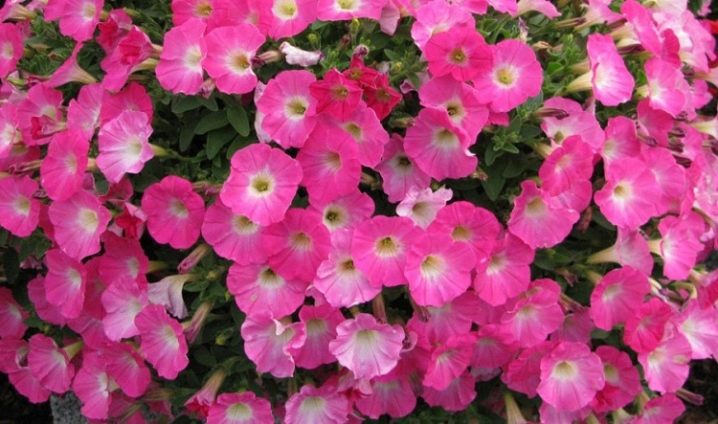
The literal translation of the name is "Pink Morning". The plant forms flexible lashes up to 1 m long, which fall in a continuous wave. The color is pink-white, the middle is yellowish.
The advantage of Pink morn petunia is that it does not need to be pinched, and this greatly facilitates the care of the plant. Grow it in pots or pots.
Attention! Other ampelous varieties are also popular - Opera Supreme Red and Opera Supreme Coral. Red and coral flowers are harmoniously combined with white, pink, yellow, blue and purple.
Advantages and disadvantages

Among the advantages of the Opera petunia are its attractive appearance, unpretentious care, undemanding to the length of daylight hours.
Thanks to this, the flower grows well in regions with short summers, for example, in the Urals or Siberia. Also, Opera petunia is very fond of using in landscape design. She will decorate any garden area.
Problems with the cultivation of Opera petunias can arise only if the rules of planting and care are not followed. For example, if the plant is not watered on time or is planted in pots that are small in diameter.
Long lashes need pruning and forming, otherwise the petunia will turn into a tangled ball. Otherwise, the varieties described above have no disadvantages.
Growing features
Getting a beautiful ampelous petunia bush is not difficult. The main thing is to adhere to simple agrotechnical rules and recommendations.
Landing rules

Ampel petunia is grown in flowerpots, pots or boxes. But first, the seeds are germinated in glasses or special seedling containers. This is done in February by preparing the soil and containers. Pre-germination of seeds strengthens the plant's immunity and guarantees long flowering.
Suitable soil for petunia consists of peat, leafy soil, sand in a ratio of 2: 2: 1. The ingredients are mixed together and sieved to make the earth light.
To speed up the germination of seeds, the container is covered with a film or thin glass and removed to a room where the temperature is maintained at + 20 ... + 22 ° C. It is important to ensure that the soil does not dry out, otherwise the ampelous petunia will die. Water the seedlings once every 5 days.
Attention! Seedlings appear 7-10 days after planting. At this time, it is recommended to spray petunia daily with water at room temperature. When the first leaves appear, the film is removed. Next, the petunia dive into boxes or pots.
In order for the pick to pass without problems, summer residents are advised to remove the shoots carefully, holding the roots with a lump of moist earth with one hand. For growing on the site, the same soil is suitable that was prepared for seedlings. Also, before picking, the plant is tempered - taken out into the fresh air for 3-4 days in a row.
Care
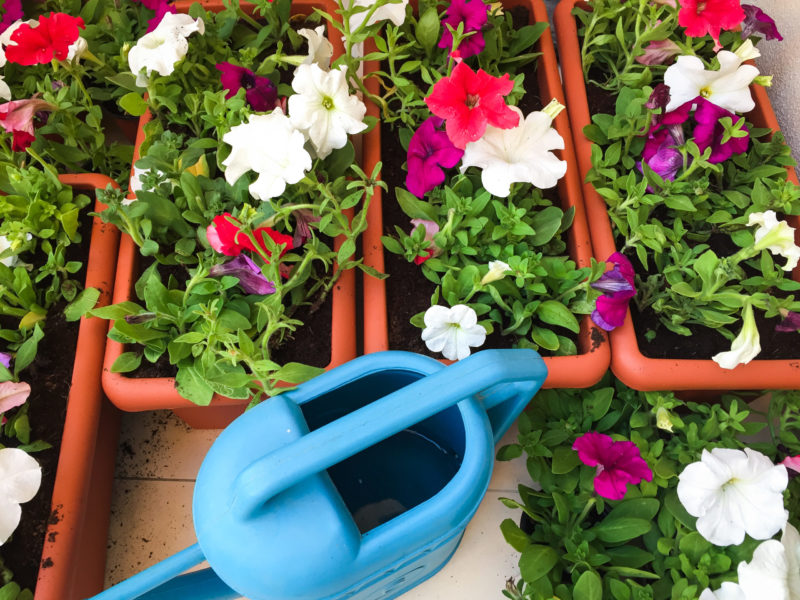
Petunia is demanding on moisture. The soil should be moist, but not wet, as excess water leads to fungal and bacterial diseases. Use only settled and soft water. Since petunia is grown in flowerpots, summer residents regularly monitor the level of accumulated water in special trays. They cannot be always wet. This leads to root rot.
To make the bush lush and bloom for a long time, it is regularly fed. Fertilizers based on humates and amino acids are perfect for this, for example, the means "Aminosol", "MicroMix" or "Humate + 7 Iodine". Water soluble feeding are quickly absorbed by the plant, do not contain chlorine, improve the decorative qualities of petunias.
Attention! Frequent watering can cause stagnant water in the ground, so it is important to improve air circulation by loosening. The procedure is carried out before each watering. Loosening depth - 3-4 cm.
Protection against diseases and pests
Common petunia diseases are late blight, black leg, powdery mildew; pests— aphid and ticks. The causes of the appearance of all diseases and insects are similar - waterlogging, sudden changes in the weather, lack or excess of fertilizing, weak immunity.
To avoid diseases, gardeners observe the sowing time, disinfect the pots with a solution of potassium permanganate and temper the seedlings.
If, nevertheless, petunia gets sick, the following treatment methods are used:
- The bushes are treated with a solution of Bordeaux liquid or potassium permanganate (3 g per 10 l of water). The procedure is carried out in the early morning, after removing the affected lashes and flowers.
- When rot is detected, the drug "Skor" is used - a systemic contact fungicide. The consumption rate is 2 ml per 10 liters of water. Spray petunia 2 times with an interval of 14 days.
- For the treatment and prevention of fungal diseases, Fitosporin-M is used. It is sold in the form of a powder or paste, suitable for use at any stage of infection. The drug is environmentally friendly and compatible with other treatment methods.
Reproduction
Gardeners use cuttings as a breeding method. The flower is propagated from February to May, using last year's uterine bushes and young petunias grown from seeds.
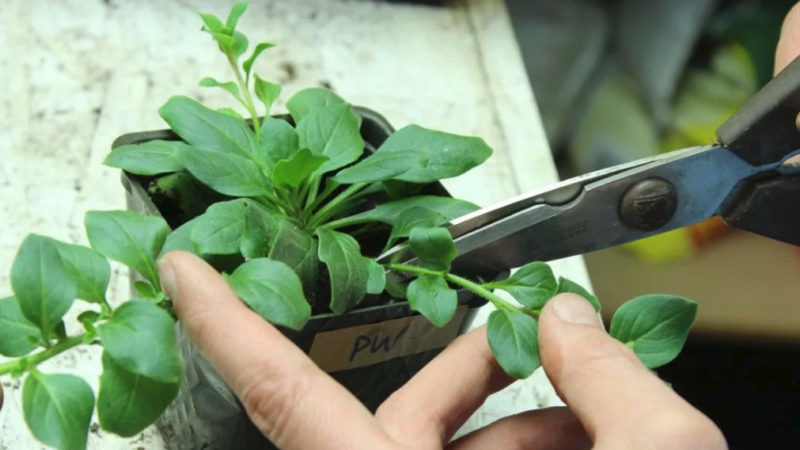
Breeding process:
- Apical cuttings 10 cm long are cut from the bushes.
- Placed in the growth stimulator "Kornevin".
- They are planted in boxes with loose soil and sand, deepening by 4-5 cm.
- Watered, covered with foil and removed to the windowsill.
- After 7 days, when fibrous roots appear, they are transplanted into seedling glasses.
Application in landscape design
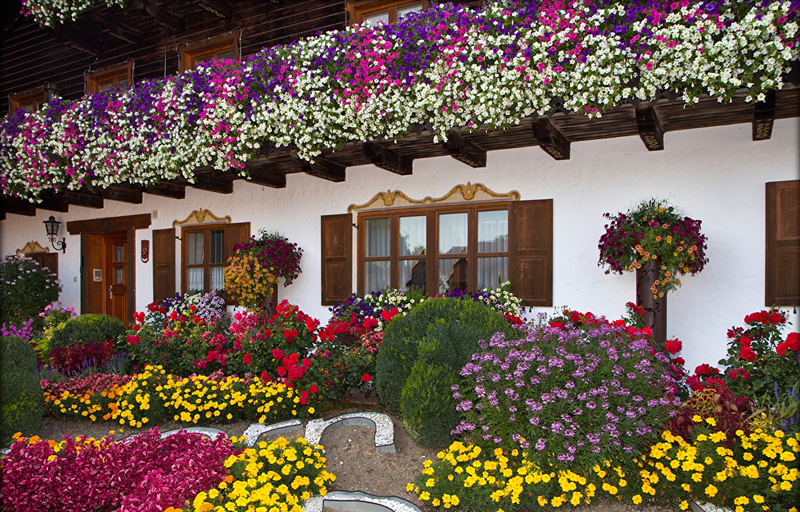
In addition to planting in flowerpots or pots, Opera ampelous petunia is grown along garden paths or a fence. For this, designers recommend purchasing special drawer stands. With their help, petunia grows correctly - falls cascade.
The main thing is to place them at a distance of 20-30 cm from the path, otherwise the lashes with flowers will fall under your feet.
Attention! Gardeners plant different varieties of Opera petunias together - they perfectly coexist with each other. When planting, observe the distance between the shoots of at least 20 cm. It is also imperative to cut off too long branches and pinch the tops so that the bush is well-groomed.
Vertical flower beds also look original in the garden. The metal mesh is rolled up and lined with dark material from the inside. The resulting pillar is filled with soil mixture and holes are made into which flower sprouts are planted. This “petunia tree” looks very impressive.
Florist reviews
Gardeners and gardeners from all over Russia share their own experience in growing varieties of ampelous petunias Opera.
Marina, Oryol: “My favorite variety is Pink Morne. The flowers are very beautiful and delicate, they do not cause hassle to care for. I have been growing a flower for the fourth year in a row, and next season I want to try to plant the varieties Opera Pearl and White. "
Grigory, Krasnodar Territory: "I have a blue and yellow petunia Opera growing in my garden. The flowers are large, bright, pleasing to the eye until autumn. I water them with rainwater and feed them with humates three times a season. I do not observe diseases and pests, which is very pleasing. "
Polina, Saratov: “I planted Supreme Raspberry Ice for the first time. Flowers of medium size, pleasant shade. But because of the rains, the bush ached, had to be processed with Bordeaux mixture. I plan to plant blue flowers next year. I hope they won't get sick. "
Conclusion
Gardeners recommend growing Opera petunia from seedlings. This method guarantees strong plant immunity and long flowering. Petunia care includes watering and feeding, pruning and loosening.
Opera varieties are indispensable for creating beautiful and attractive flower beds and flower beds. Bushes are grown in flowerpots, vertical flower beds and pots. Petunia blooms from June to October. During this period, it needs preventive treatments for diseases and pests.